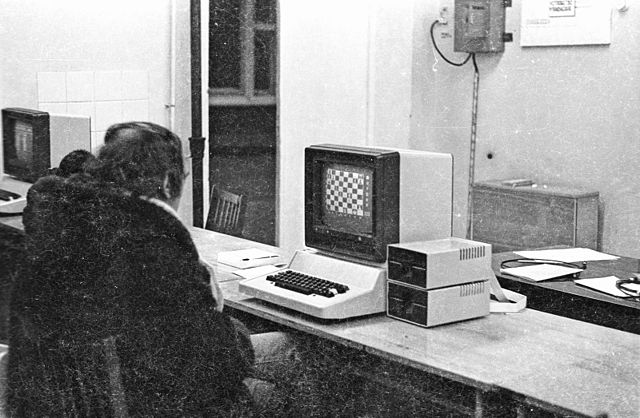History of personal computers
The history of the personal computer as a mass-market consumer electronic device began with the microcomputer revolution of the 1970s. A personal computer is one intended for interactive individual use, as opposed to a mainframe computer where the end user's requests are filtered through operating staff, or a time-sharing system in which one large processor is shared by many individuals. After the development of the microprocessor, individual personal computers were low enough in cost that they eventually became affordable consumer goods. Early personal computers – generally called microcomputers – were sold often in electronic kit form and in limited numbers, and were of interest mostly to hobbyists and technicians.
The LINC in use in a home
Olivetti Programma 101
1970: Datapoint 2200
Intel 4004 with the chip exposed
A personal computer, often referred to as a PC, is a computer designed for individual use. It is typically used for tasks such as word processing, internet browsing, email, multimedia playback, and gaming. Personal computers are intended to be operated directly by an end user, rather than by a computer expert or technician. Unlike large, costly minicomputers and mainframes, time-sharing by many people at the same time is not used with personal computers. The term home computer has also been used, primarily in the late 1970s and 1980s. The advent of personal computers and the concurrent Digital Revolution have significantly affected the lives of people in all countries.
Commodore PET in 1983 (at the American Museum of Science and Energy), an early example of a personal computer
The 8-bit architecture Pravetz 82 computer produced in Bulgaria from 1982, in a classroom in the Soviet Union
Altair 8800 computer
The three personal computers referred to by Byte Magazine as the "1977 Trinity" of home computing: The Commodore PET, the Apple II, and the TRS-80 Model I.








